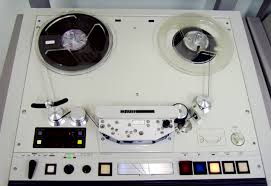In this blogpost, Sudhi Ranjan Bagri, Student, National Law Institute University, Bhopal writes about the admissibility of tape recorded statements.
Introduction
These days the procedure of giving tape recorded conversation as evidence before the court of law particularly in cases pertaining to Prevention of Corruption Act and TADA have become very common. In civil cases also, parties may resort to tape recordings of relevant conversation to support their contentions and strengthen their side. However, before accepting such evidence, the court has to consider various questions like the admissibility, nature and evidentiary value of such tape-recorded conversation.
Prior to the year 2000, i.e. before coming into force of the Information Technology Act, and the subsequent amendment of the Indian Evidence Act, there were only oral or documentary evidence. No provisions were present in the Act, which in any way pointed to the admissibility, nature and evidentiary value of any conversation or any statement which were recorded in an electromagnetic device. The question regarding the admissibility of such tape recorded conversations was raised many times before the court of law. This compelled the courts in India and England to develop principles of receiving such evidence in courts and thereby to act upon such evidence.
The relationship between law and technology has always been a complex one. However, the law is always tilted towards technology whenever required. The courts have very often from time to time, talked about the utility and admissibility of such tape recorded conversation in its various judicial pronouncements.
Judicial trend
Regarding admissibility of photograph: This matter came up before Supreme Court in the case of Abdul Razak v. State of Maharashtra[1]. The SC held that the court may allow the photographs to be received as evidence if the court is satisfied that the concerned photograph is not a result of ‘trick photography’ and the photograph is above suspicion.
Proof of such recording: The Supreme Court in the case of Yusufali v. State of Maharashtra[2], observed that “if a statement is relevant, an accurate tape-record of the statement is also relevant and admissible”. The court further stated that before admitting any such recording as evidence, the time and place and accuracy of the recording has to be proved by a competent witness and that the voice, of the person against whom such evidence is being submitted, must be properly identified. The court promulgated that since magnetic tape recordings can be easily tampered with, they must be received with great caution, and must be admitted only after the court is satisfied that the record has not been tampered with.
Evidentiary value of such recording: The Supreme Court in the case of Mahabir Parsad v. Surinder Kaur[3], was concerned with the evidentiary value which can be attributed to the tape-recordings. The court stated that tape-recordings can be used only as corroborative evidence of the conversation deposed by any of the parties to the conversation. In situations where such evidence is absent, the tape-recordings cannot be used as evidence.
Reliability of such recordings: The degree of reliance which can be attributed to the tape-recordings was decided by the Supreme Court in the case of R.M. Malkani v. State of Maharashtra[4]. In this case, the prosecution case was based solely on the tape recorded conversation, which clearly proved the appellant’s intention to obtain a bribe. On the other hand, the appellant contended that such conversation cannot be admitted as evidence as per the provisions of Indian Evidence Act, as it was ‘unlawful’. But the Supreme Court discredited the contention of the appellant and held such conversation to be relevant.
The situation regarding the admissibility of the tape recordings as evidence was finally made clear by the Supreme Court in the case of Ram Singh v. Colonel Ram Singh. The apex court in this case laid down following principles regarding admissibility of such recordings:
- The voice of the person, against whom such recording is being produced as evidence, must be duly identified by the person who is producing such recording as evidence.
- The accuracy of the tape recorded statement has to be proved by the maker of the record by satisfactory evidence, either direct or circumstantial.
- Every possibility of tampering with either whole or any part of the tape-recorded statement must be ruled out; otherwise, it may render the said statement out of context and, therefore,
- The statement must be relevant according to the rules of the Indian Evidence Act.
- The recorded cassette must be carefully sealed and kept in safe or official custody.
- The voice of the person should be clearly audible and not lost or distorted by other sounds or disturbances.
Conclusion
The use of modern technology tools like tape records, video films, polygraph tests, DNA tests, etc. make the probability of truth highly certain. It is a general rule of evidence that all such evidence is admitted which helps the court in arriving at the truth.
The provisions of the Indian Evidence Act, coupled with the Information Technology Act, 2000, by and large, makes it clear that the electronic record, which is called as “computer output” is admissible evidence, provided that such evidence shall have to be necessarily accompanied by a certificate, without which, it is inadmissible.
[1] AIR 1970 SC 283
[2] (1967) Bom L.R. 76 (SC)
[3] AIR 1982 SC 1043
[4] AIR 1973 SC 157
 Serato DJ Crack 2025Serato DJ PRO Crack
Serato DJ Crack 2025Serato DJ PRO Crack










 Allow notifications
Allow notifications




[…] per the the Judgement of RM Malkani v. State of Maharashtra[4]. In this case, the prosecution case was based solely on the tape recorded conversation, which […]